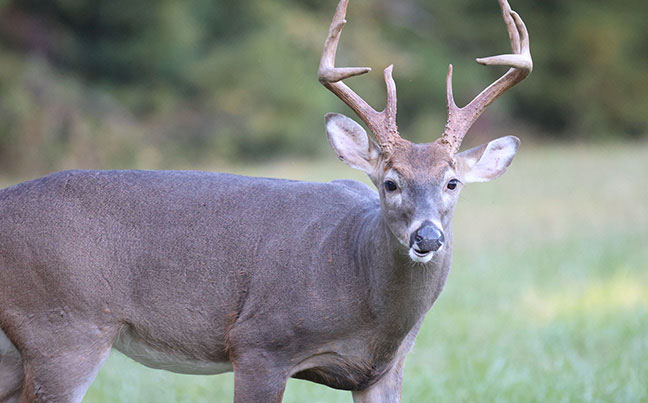Check out these important ways to identify bucks and does you shouldn’t shoot
Seeing a deer and knowing what category it goes in is a vital part of deer hunting. Properly identifying your target is part of a safe, effective hunting effort, after all. This makes it important to identify deer you do want to shoot, and those that you don’t. Some deer that might fall into the latter category include button bucks, young bucks, shed bucks, illegal bucks, pregnant does, and more. Here are things to know.
Button Bucks
A button buck can be difficult to identify. Later in the season, button bucks have larger bodies and are easily mistaken as does. That said, these button bucks are usually still with their mothers. To better identify button bucks, study the body size in comparison to the fawn it is with. If one is significantly larger and the other is smaller, the larger one is the buck fawn.
Next, observe the head. A button buck has a flat, square, blocky noggin (especially across the top). Does are more rounded on top, even doe fawns. Of course, good optics can spot buttons on top of a button buck’s head.
Interestingly, if a button buck’s mother was harvested, that buck is likely to remain on the property for its lifetime. Whereas, if the button buck’s mother lives, at 1 ½ years old, it has a 50% chance of dispersing to a new home range.
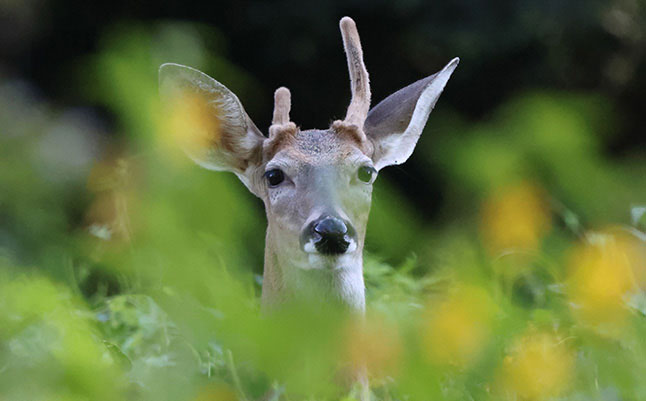
Young Deer
Some hunters might choose to pass younger bucks to allow these deer to reach older age classes. In many situations, this is the norm. Being able to determine if the deer is a young buck, or a mature one, is part of deer hunting.
Fortunately, certain characteristics help gauge this. For example, 1 ½-year-old buck looks like a doe with antlers; and most yearling bucks are even smaller than does. Next, a 2 ½-year-old buck looks like a large doe with antlers. Third, a 3 ½-year-old buck has a race-horse look with its muscled-up body; but it’s still showcasing long legs, lesser neck swell, and more. At 4 ½, bucks pack on the weight, the neck swells significantly, the front and back legs start to look shorter, and more. And at 5 ½-plus, bucks look much heavier in the front end than the back, legs look too short for their body, necks swell greatly, etc. Of course, there are other characteristics to watch for within each age class, but that’s an entirely different article.
Deer Shedding Antlers
One of the biggest accidents to avoid is shooting a buck that’s already shed its antlers. This can be easy to do, though, especially if the buck is at a distance, or if it’s very low light. Fortunately, there are ways to combat this.
First, study the deer’s body. Is the body big? Does it have body proportions that signal it’s a buck, or even a mature buck? Does it have a large, blocky head with a straight line across the top of it? Can you see round pedicles where the antlers were? Does it act dominant toward other deer? Yes to any of these might indicate it could be a buck that’s already shed.
Illegal Bucks
In some places, state wildlife agencies require bucks to meet certain requirements before being harvested. Oftentimes, these involve a certain number of points, meeting or exceeding an inside spread minimum, and more.
Generally, these limits are implement on public lands. That said, some state agencies deploy these methods on entire counties or regions, private and public land alike. Of course, these are usually meant to increase the buck age structure, and improve the overall deer herd, which leads to more and better deer hunting opportunities.
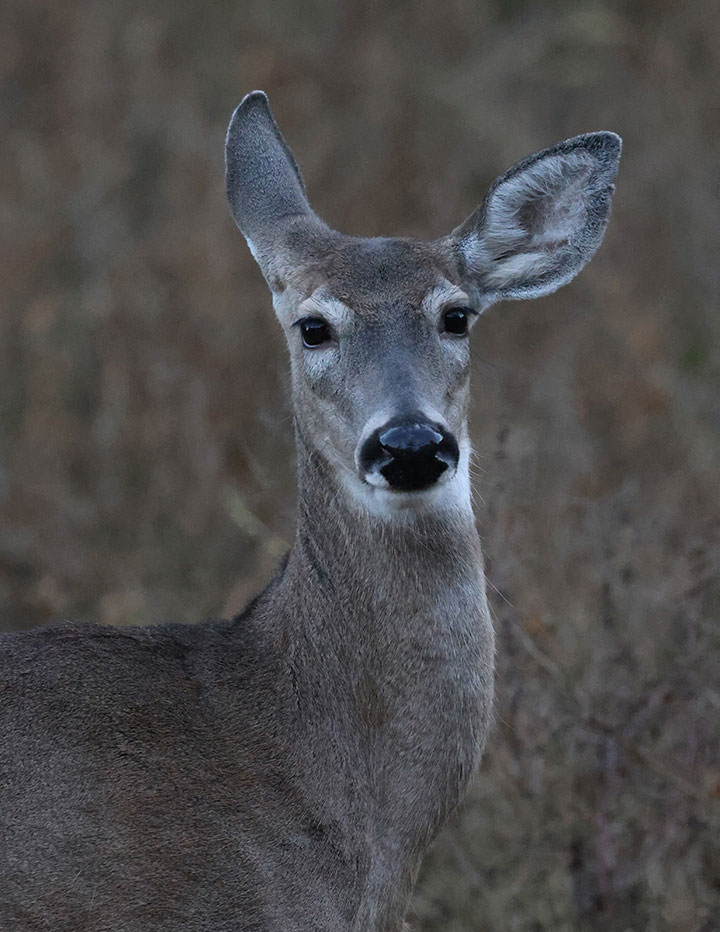
Pregnant Does
In some instances, hunters might not want to shoot pregnant does. Depending on the circumstances, does might not fawn until after bow season begins. Likewise, really late in the season, does might be far along with carrying fawns. Either way, shooting these does tends to be a poor choice.
This is true for several reasons, especially if you aren’t trying to reduce the deer density. First, shooting does after the rut wastes all of the food that doe has consumed throughout the year. It also wastes the sire’s efforts during the rut. At this point, you might as well just let her fawn and thin out the herd early next season.
Conclusion
All things considered, hunters who fancy themselves as deer stewards or land managers are more than trigger pullers. They’re shepherding the deer herd. And that requires knowing what deer not to shoot, too. Keep that in mind this season, and in seasons to come.
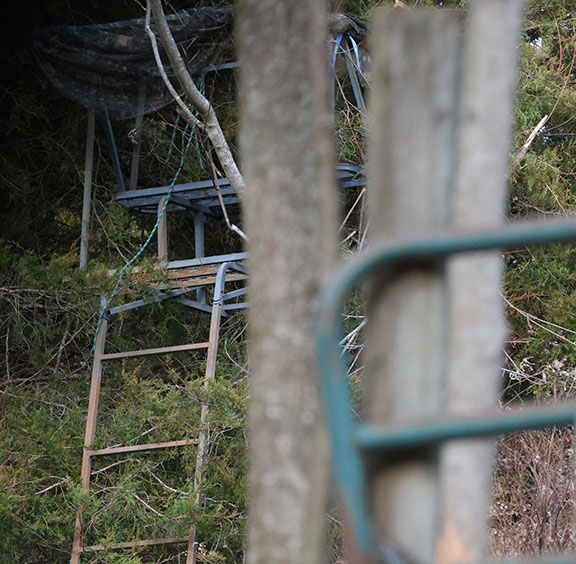
How to ID Unique Bucks
Hunters who hope to monitor specific, unique bucks over the course of multiple seasons must learn how to ID them year-over-year. To do this, pay attention to antlers, behavioral traits, body size, body markings, body scars, ears, fur coloration, and more.
Antlers: Bucks’ antlers change from year to year. That said, they oftentimes retain similar characteristics. While the buck’s frame tends to get bigger each year, certain antler characteristics and shapes remain similar or the same. For example, the brow tines might always be really tall, points might curve a certain way, beams might generate a certain structure, mass might be really heavy or small, etc. Additionally, bucks might change their number of points from year to year, but barring injury or illness, the overall “shapes” should remain the same.
Behaviors: Deer are much like humans and other animals in that they express certain behavioral traits. Over time, they develop “personalities” that culminate into a unique behavioral profile. Using trail camera videos, or seeing deer in person, can help learn these.
Body Size: Some bucks are big-bodied. Other bucks are small-bodied. It’s all based on genetics, nutrition, environment, and overall health. Keep an eye on their body size to see which category they fall into.
Body Markings: Certain body markings can clue you into whether a buck is this deer or that deer. Change in color, recognizable scars, and more, are good indicators.
Ears: Oftentimes, deer have ear rips, tears, notches, or other markings that are unique to them. These things can help determine what buck it is.
Fur Color: Deer aren’t all brown. Some express darker or lighter shades. This is especially true around the face and head. The forehead patch can be shades of black, gray, brown, white, or red. The black and white markings around a deer’s nose and chin are usually unique, too.
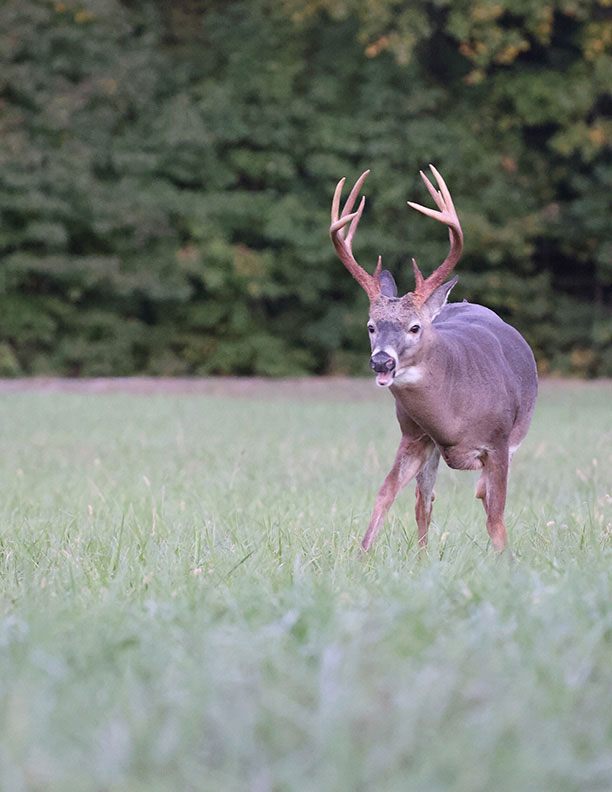
Cool Facts about Deer Antlers
Antlers are among the most interesting elements in the animal kingdom. While scientists don’t yet know everything about whitetail antlers, they know a lot, including the following cool antler facts.
- Antlers differ from horns in that antlers are cast and regrown each year. Horns are not cast, but continually grow.
- The antler growing process begins and ends at the antler pedicle.
- Velvet antlers have fiber-like hairs that allow bucks to feel with their antlers. They retain a memory imprint of their antler makeup even after the velvet is gone.
- Antler growth is a controlled form of cancer. In fact, scientists are studying antlers to better understand human forms of cancer.
- Antlers are the fastest growing tissue known to man. No other is faster.
- Antlers do not grow in a gradual, consistent manner. Rather, antlers grow in spurts.
- Bucks cannot grow their largest rack until at least age 4 or 5. This is because the skeletal and muscular systems do not finish growing until age 3 to 4.
- Testosterone drives the antler velvet shedding and antler casting processes.
- It’s possible for does to have antlers, but the odds are 1 in 10,000.
- Usually, odd-looking antlers aren’t a result of genetics.
- Almost all bucks harbor the genetic traits to throw non-typical points (i.e.: stickers, kickers, drop tines, extra points, etc.). However, most don’t reach the age classes necessary to express these in their antlers.
- Damage to the antler pedicle, or the antler itself, can cause an antler deformity. Even a bodily injury can lead to weird-looking antlers.
- Science has proven that culling for superior antlers cannot impact a wild deer herd (negatively or positively). This is for several reasons, such as that you can’t determine a wild deer’s pedigree, does contribute 50% of the antler genetic code, big bucks don’t always sire big bucks, little bucks don’t always sire little bucks, and more. But ultimately, antler genetics are too engrained in the herd to impact.
Per our affiliate disclosure, we may earn revenue from the products available on this page. To learn more about how we test gear, click here.



